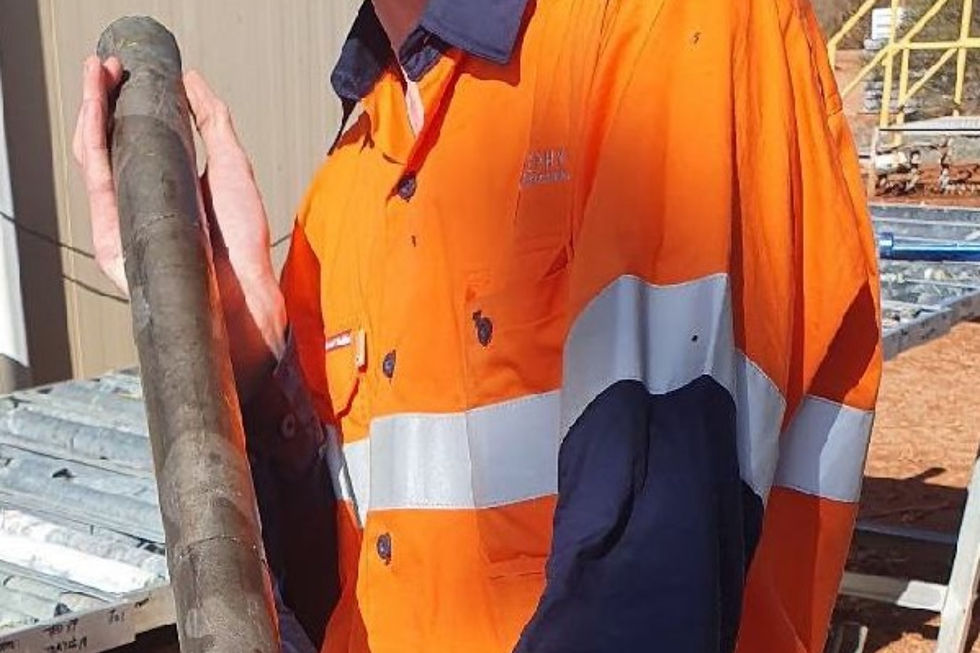
Geochemical sampling has confirmed massive nickel-sulphides at ASX-listed Toro Energy’s Jumping Jack discovery, which is part of its wholly-owned Dusty nickel project in Western Australia’s northern Goldfields.
Two discovery holes were drilled last year and Toro later said that hand-held portable X-ray fluorescence (hh-XRF) suggested a concentration of between 1.44 and 4.66 per cent nickel. Now, assays returned from the laboratory have confirmed the massive nickel-sulphides discovery and has also delivered more precise grades.
The results show massive nickel-sulphides were intersected from diamond drill hole TED37 in 3.45m from 240.2m downhole and in 2.44m from 231.6m from TED38.
TED37’s 3.45m of massive nickel-sulphides was shown to be grading an average 1.42 per cent nickel, 0.19 per cent copper and 0.76 grams per tonne platinum and palladium from 240.2m downhole, including 1.45m of massive nickel-sulphides going 2.2 per cent nickel, 0.36 per cent copper and 1.27 grams per tonne platinum and palladium from 242.2m downhole.
TED38 intersected 2.44m of massive nickel-sulphides grading 1.16 per cent nickel, 0.2 per cent copper and 0.77g/t platinum and palladium from 231.65m downhole.
Dusty falls within Toro’s Yandal gold project. It is about 110km north-east of the WA Goldfields town of Leinster on the Yandal Greenstone Belt and, notably, is only about 50km east of BHP’s world-class Mt Keith open-pit nickel operation. The Jumping Jack discovery was the third of four zones of massive to semi-massive nickel-sulphides discovered along the Dusty komatiite. The other discoveries are Houli Dooley, Dusty and Dimma – the last of the four to be discovered.
Management says Dusty’s nickel-sulphides discoveries are the first komatiite-hosted massive nickel-sulphides to be discovered along the belt, adding that means the ultramafics are under-explored and represent a genuine nickel-sulphides exploration target. Intriguingly, only about 4.5km of the 7.5 km-long Dusty komatiite magnetic trend has been tested to date and all four of Toro’s discoveries remain open at depth.
The company also points out that it has at least one more airborne magnetic anomaly, identified by drilling to be komatiite, which is yet to be adequately tested along strike or at depth. It says it is the komatiite associated with the Yandal One prospect about 20km to the south of Jumping Jack.
Together, the two known komatiites represent some 14km total strike length of target geology for massive nickel-sulphides.
Toro’s 10,000m drill program was not completed last year as planned – in part due to COVID-related issues – but the work has been carried over to this year. The pandemic not only caused delays in getting assay results back from laboratories but also led to staffing impediments in the field. The result is that more assays from last year’s drilling are still to be released and are expected soon.
This year’s drilling has concentrated on areas above and below the strike where Dimma sits – about 400m south of Jumping Jack. Just last week, Toro reported diamond drilling at Dimma intersected about 2m of continuous massive nickel-sulphides mineralisation from 147.2m downhole and that hh-pXRF had suggested nickel grades were within the 1.5 and 3.4 per cent nickel range.
Management will be hoping some of the good fortunes enjoyed at the prolific Mt Keith, which had an original resource defined as 647 million tonnes going 0.52 per cent nickel, has rubbed off on its near neighbour. Mt Keith’s remaining resource is estimated at 224 million tonnes at 0.53 per cent nickel.
Is your ASX-listed company doing something interesting? Contact: office@bullsnbears.com.au